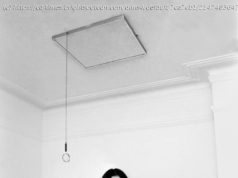About 7,000 miles away, in New Jersey, the artist’s sister summed up her family’s response: “We were speechless.”
TOKYO — As Sotheby’s contemporary art auction heated up in New York last week, the Japanese billionaire Yusaku Maezawa sat on the floor of his living room here, streaming the auction live on his laptop and relaying bids for Jean-Michel Basquiat ’s 1982 skull painting on his iPhone to a Sotheby’s specialist. After the price sailed past the $60 million guaranteed minimum, Mr. Maezawa — who hadn’ t gone into the sale with his own limit in mind — felt that the competitive bidding reinforced the work’s enormous value.
“I decided to go for it, ” Mr. Maezawa said in an interview at his home on Friday.
As Mr. Maezawa was bidding, Basquiat’s sister Jeanine Basquiat was about 7,000 miles away in New Jersey, hoping the auction would turn out well. When she heard that Mr. Maezawa had paid $110.5 million — the record price for an American artist at auction — she called her older sister, Lisane Basquiat, in California. “There wasn’ t a lot to say, ” Lisane said in a rare telephone interview. “We were speechless.”
If members of the Basquiat family are keepers of the Basquiat flame, Mr. Maezawa has now ensured it will continue burning, at least in the near future — in no small part because he posted about his purchase on Instagram and Twitter right after the auction.
“Vast numbers of people are aware of Jean-Michel Basquiat all over the world, ” said the dealer Jeffrey Deitch, a longtime Basquiat expert, “and that is really only because of the immense price.”
Whether or not this month’s sale recalibrates the market for this Brooklyn-born artist, who died of a heroin overdose at 27, remains to be seen. While collectors are likely to consign their works by him in an effort to ride this wave, few top paintings are expected to come up for sale anytime soon. And auction prices don’ t necessarily translate into intrinsic value.
Still, most agree that the Basquiat sale has cemented his place in the revenue pantheon with Pablo Picasso and Francis Bacon; confirming that he is not some passing trend; and forcing major museums to acknowledge that, by not having the artist in their collections, they passed over a crucial figure in art history.
“It’s an artist who we missed, ” said Ann Temkin, the chief curator of paintings and sculpture at the Museum of Modern Art, which does not own a single Basquiat work. “We didn’ t bring his paintings into the collection during his life or thereafter.”
In part, Mr. Maezawa’s purchase may help correct this omission, given that he plans to open a museum to showcase his collection in Chiba, his hometown. “I want to show beautiful things and share them with everyone, ” he said, adding that he plans to lend pieces to museums around the world. “It would be a waste just to keep it all to myself.”
Technically, however, his Basquiats are in private hands rather than public institutions, as are the other examples widely considered the artist’s best work — generally paintings made from 1981 to 1983. Given Basquiat’s short career (1980-87) , there are simply not a lot of great Basquiats out there. (Peter Brant, Eli Broad and Philip Niarchos are among the collectors who have them.)
“You’ re talking about a handful of masterpieces, which are distributed among a few collectors who are not sellers, ” said the art dealer Brett Gorvy, a former Christie’s chairman. “You’ re going to have to wait a long time if you are a major collector to see another extraordinary painting like this.”
Even the Basquiat estate does not have many leading pieces left, art experts say; the two it sold at Phillips this season, for example, each went for under $4 million.
The Basquiat sisters, in a joint telephone interview, said they didn’ t need the price to tell them their brother’s work belonged in the history books. But it was still nice to have Jean-Michel’s auction value enter the stratosphere. “It’s humbling and satisfying to see this happen 30 years after he passed away, ” Lisane said. “We have been walking on Cloud 9.”
The sisters had never seen this particular painting before, so Sotheby’s invited them to New York to view it in advance; Lisane called it “breathtaking.”
Mr. Maezawa, too, got a private pre-sale viewing. “He’s a very serious collector, ” said Amy Cappellazzo a Sotheby’s chairwoman, “hugely engaged.”
While he “didn’ t expect the price to go that high, ” Mr. Maezawa said his love for Basquiat runs deep — he paid the previous high price for the artist last year ($57.3 million) . And he saw that others felt the same, including one other buyer willing to go the distance (later revealed to be the casino magnate Frank J. Fertitta III) , since the two wound up in a bidding war.
“I learned that so many people wanted to have this piece of art so much, ” Mr. Maezawa said. “I was sure that my eye was certain.”
Mr. Maezawa said he started collecting about 10 years ago, and the apartment he rents in Tokyo is testament to his passions for art — Richard Prince’s “Runaway Nurse” ($9.6 million at Christie’s last year) in the stairwell; a Roy Lichtenstein in the dining room; a large Christopher Wool ($13.9 million) in the living room, along with two Calder mobiles.
Mr. Maezawa is also seen as ushering in a new chapter of collecting in Japan, a country previously known for the Impressionist art bubble of the’ 80s. He is a collector “who became a businessman, and not a businessman who became an art collector, ” said Aki Ishizaka, the former head of Sotheby’s in Japan and now an art adviser.
Curled up in a scarlet red armchair designed by the French designer Jean Royère, Mr. Maezawa — who does not work with an art adviser — said he was driven entirely by his love of art and not financial investment. “I just follow my instinct, ” he said. “When I think it’s good, I buy it.”
Having forgone college to form an indie rock band — he was the drummer — Mr. Maezawa started his company in 1998, now the large Japanese online fashion mall, Zozotown. His net worth of about $3.5 billion makes him the 14th richest person in Japan.
Given a culture here in which people are typically reluctant to flaunt their wealth — buyers at last year’s Tokyo Art Fair said they did not even want their wives to know about their purchases — Mr. Maezawa is considered something of a renegade.
He is also a flashy presence on social media, posting photos of his purchased artworks on Instagram — along with pictures of his Bombardier Global 6000 private jet and collection of watches by Patek Philippe and Richard Mille.
He has become friendly with celebrities like the actor Leonardo DiCaprio, and he attended the Metropolitan Museum of Art Gala with his girlfriend, the model Saeko Dokyu — although he said the flashiness “was a little too much for me.






